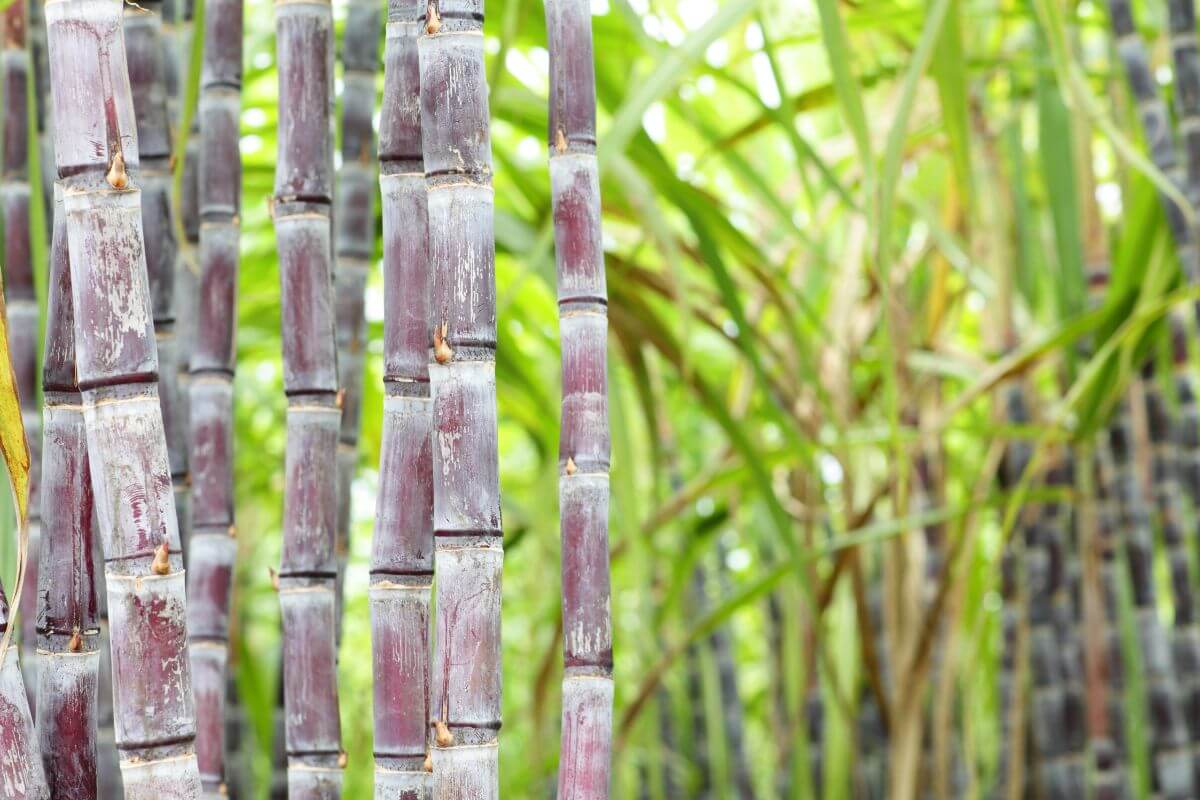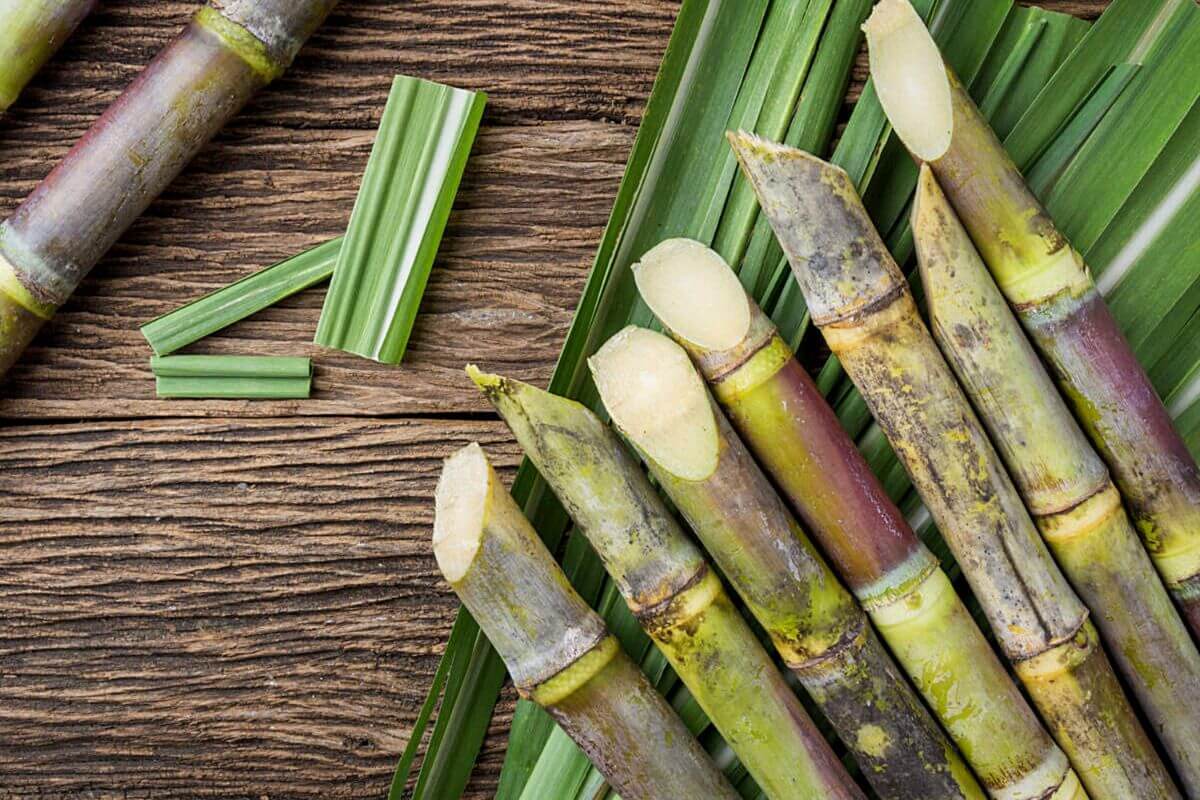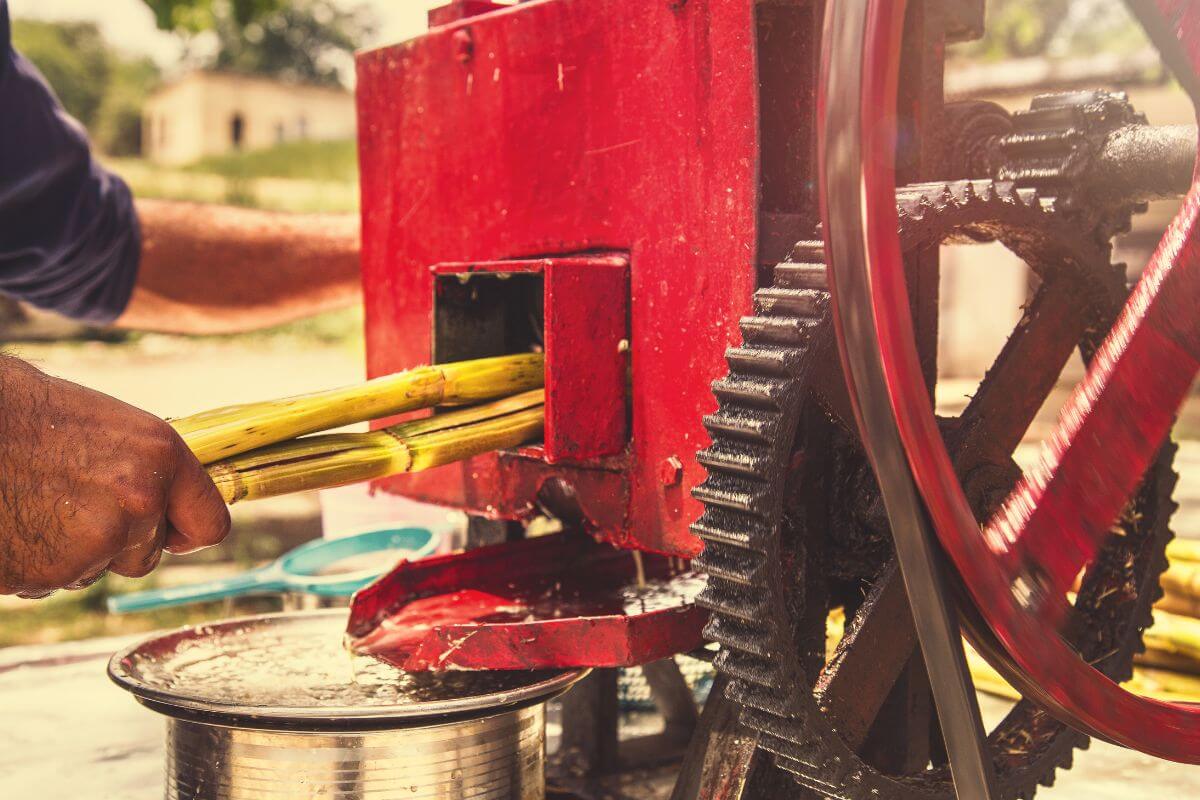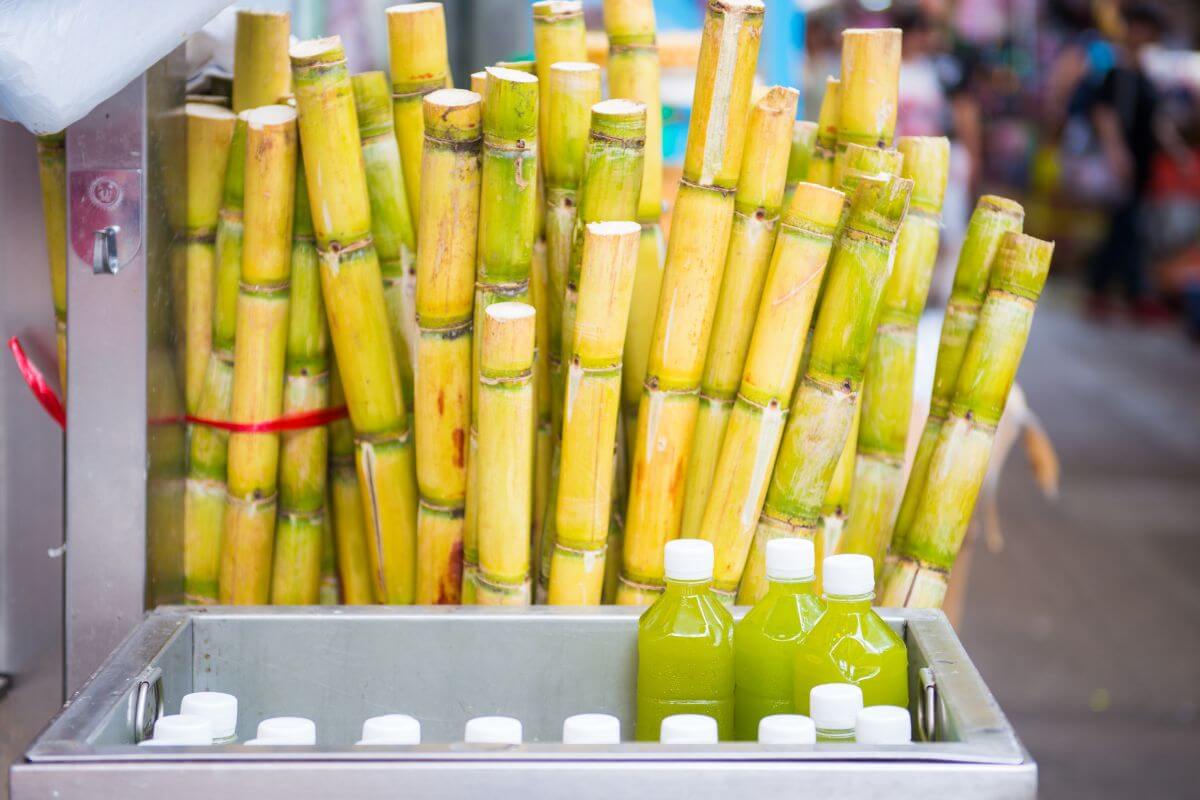Sugarcane has become a controversial topic lately. Some say sugarcane is a vegetable while others insist it’s a fruit. Which side are you on?
Would you be surprised to learn that sugarcane is a plant, but not a fruit or vegetable? Sugarcane juice is also often confused with fruit juices because it’s sweet, but it’s not fruit juice either.
In this guide, I’ll cover what sugarcane is, how it compares to bamboo, and how to consume sugarcane.
- Related article: Explore Vegetables and Fruits Differences
5 Key Takeaways on Is Sugarcane a Fruit or Vegetable
- Sugarcane is a type of perennial grass, not a fruit or vegetable. It belongs to the Poaceae family, the same family as wheat and rice.
- The edible part of sugarcane is the stalk, which stores the sweet juice used to produce sugar. Unlike fruits, it doesn’t have seeds or come from flowers.
- Sugarcane juice, though sweet, is not classified as a fruit juice. It comes from the plant’s stem rather than a fruit.
- Sugar is obtained by crushing the sugarcane stalks to extract the juice, which is then boiled, filtered, and crystallized to produce the sugar we use.
- While sugarcane is vital for sugar production, it requires large amounts of water and land, leading to a higher environmental impact compared to other plants like bamboo.
Is Sugarcane a Fruit or Vegetable?

Sugarcane might surprise you. It’s not a fruit or a veggie. It’s a kind of grass. Let’s break down why it’s classified this way:
- Sugarcane is a perennial grass, which means it lives for several years. It’s tall and looks a lot like bamboo. It’s part of the Poaceae family, the same family as wheat and rice.
- The part we eat is the stalk. This is where sugar is stored. Unlike fruits, sugarcane doesn’t come from flowers and has no seeds.
Edibility:
- We mainly enjoy sugarcane by drinking the sweet juice from its stalk. You can drink it fresh or turn it into sugar and other goodies.
- We don’t eat the leaves or the inside of the stem. They’re too fibrous and hard to digest.
So, sugarcane is a grass, not a fruit or veggie. We love it for its sweet juice, which becomes sugar, but we leave the rest of the plant alone.So, what is sugarcane and why is it a cash crop?
What Is Sugarcane?

Sugarcane is a tropical and subtropical perennial grass. It is botanically named the Saccharum oficinarum and belongs to the Poaceae family. This family includes maize, rice, and wheat, among others.
The sugarcane plant is recognizable for its green stalks and green sword-shaped foliage. It can grow to heights of approximately 10 to 23 feet.
Harvesting time varies, depending on where Sugarcane is cultivated. The sugarcane crop can require 9 to 22 months to mature for harvesting.
The sugarcane trees are usually harvested before they flower. Once they flower, the sugarcane stems no longer contain any of the sweet juice they’re known for. Sugarcane stores starch inside its stem in the form of juice. It boasts a juicy, sweet flavor.
Sugarcane is a cash crop because it’s very valuable commercially. This is one of several crops that are used to produce sugar. Sugar is extracted from the sugarcane juices through boiling and evaporation.
The sweet juice found inside the stems is squeezed out. The juice extraction is obtained using a machine equipped with rollers that press the stems down and apart. The inside white hued stem can also be chewed to taste the sugarcane’s juice directly.
Is Sugarcane Juice a Fruit Juice?
Sugarcane juice tastes sweet, but it’s not fruit juice. This might surprise you because we often think of sweet things as fruits. However, sugarcane doesn’t fit into the fruit category, and that’s okay.
We usually think of fruits as sweet parts of plants we eat. This idea comes from cooking, not science. In the case of sugarcane, we’re only drinking the juice from its stem. We don’t eat the stalk or leaves because they’re hard to digest.
This shows how sugarcane is different. It gives us something sweet to drink, but it’s not a fruit in the traditional sense.
Does the Sugarcane Plant Flower?
Yes, sugarcane plants do have flowers, but they’re not for eating. Only the older plants get flowers. Most of the time, farmers cut down the sugarcane before it has a chance to bloom.
When sugarcane does flower, the juice in the plant’s stems isn’t sweet anymore. This makes the plant not useful for making sugar.
After farmers take the juice out, they don’t waste the rest of the plant. They either turn it into compost to help other plants grow or use it in factories for different products.
This process shows how farmers make sure to use every part of the sugarcane plant, keeping waste to a minimum.
How Is Sugar Obtained from Sugarcane?

Sugar comes from sugarcane, and getting it ready for us to use involves several steps. Let’s break down how this happens simply:
- Harvesting the Cane – Workers cut down sugarcane close to the ground. They do this by hand or with machines. It’s done in cooler months to keep the sugar from getting lost.
- Getting the Juice – Right after cutting, the cane is crushed with big machines that have rollers. This breaks the cane and lets out the juice. They have to do this fast so the sugar doesn’t change.
- Cleaning the Juice – The juice goes through filters to take out dirt and bits of the plant. Sometimes, they add lime to help clump the impurities together so they can remove them easily.
- Making the Juice Thick – They boil the juice to get rid of extra water. This makes the juice thicker and ready for the next step.
- Forming Crystals – They add tiny sugar crystals to the thick juice to start making bigger sugar crystals. The syrup is cooled down to help the crystals form.
- Separating Crystals from Liquid – The mixture with the crystals is spun around in machines to pull out the sugar crystals from the liquid part, which is called molasses.
- Drying and Packing the Sugar – The sugar crystals are dried to get rid of any wetness, so they don’t stick together. Then, they sort and pack the sugar to send it out to stores and food makers.
- What’s Left Over – After getting the juice, there’s leftover fiber called bagasse. This is used to fuel boilers or make other things. There’s also molasses, which is used in baking, for animal food, and in making alcohol.
This entire process turns sugarcane into the sugar we use, showcasing the complexity and efficiency of sugar-making. If you want to try this yourself, you’ll need a sugarcane juicer, which is available online.
The Difference Between Sugarcane and Bamboo
Bamboo and sugarcane are both important plants, but they have some key differences that set them apart.
| Aspect | Bamboo | Sugarcane |
|---|---|---|
| Structure | Hollow stems, making it lighter and more flexible | Solid stalks |
| Growth | Grows extremely fast, with some types growing several feet in just a few weeks | Grows quickly, but not as fast as bamboo |
| Products | Used for making furniture, strong materials, fabric, and paper | Mainly used for making sugar — leftovers used for eco-friendly packaging, disposable dishes, and biofuels |
| Environmental Impact | Better for the environment, absorbs a lot of carbon dioxide, and renews itself | Requires a lot of water and land, leading to a higher environmental impact |
In short, bamboo and sugarcane differ in structure, growth rate, uses, and environmental impact. Bamboo is lighter, grows faster, has a wider range of uses, and is more eco-friendly than sugarcane. Sugarcane is important for sugar and biofuels but has a bigger environmental footprint.
Can You Eat Sugarcane?

You can’t eat sugarcane like a fruit, but you can enjoy its juice. Only the juice from the sugarcane stem is good to eat. To get this juice, people use machines that squeeze the stems.
In places like Asia, people chew on sugarcane to taste its sweet juice, which is like drinking sweet water. It’s a popular snack or dessert there.
But remember, you can’t eat any other part of the sugarcane plant. Even the juicy inner part isn’t digestible.
If you find fresh sugarcane, here’s how to taste it. Cut the stem into pieces about 3 inches long. Take off the green outer layer to reveal the white inner stem. This white part is what you can chew to get the sweet juice, but don’t swallow it. If you prefer not to go through the whole process, you can simply buy a processed version on Amazon.
Is Sugarcane a Fruit or Vegetable? Final Thoughts
Sugarcane is neither a fruit nor a vegetable. It is botanically a perennial grass used to produce sugar from its juice upon extraction. Sugarcane juice is made into sugar and refined into crystalline form.
You can also check out the USDA’s Agricultural Research Service site for their research on many agricultural topics, including sugarcane.
To learn more about fruits and vegetables, check out these articles:



